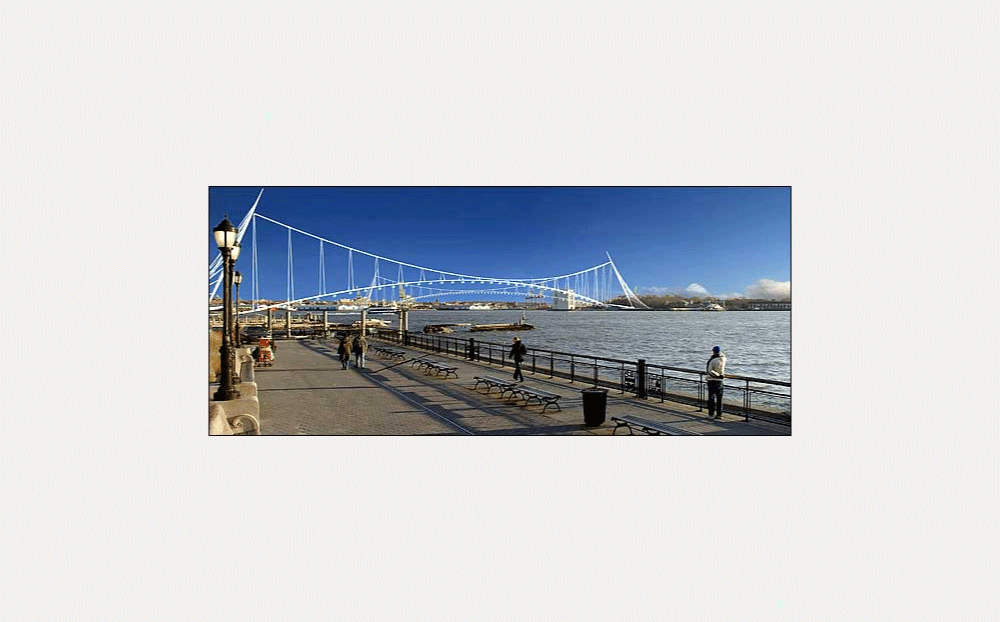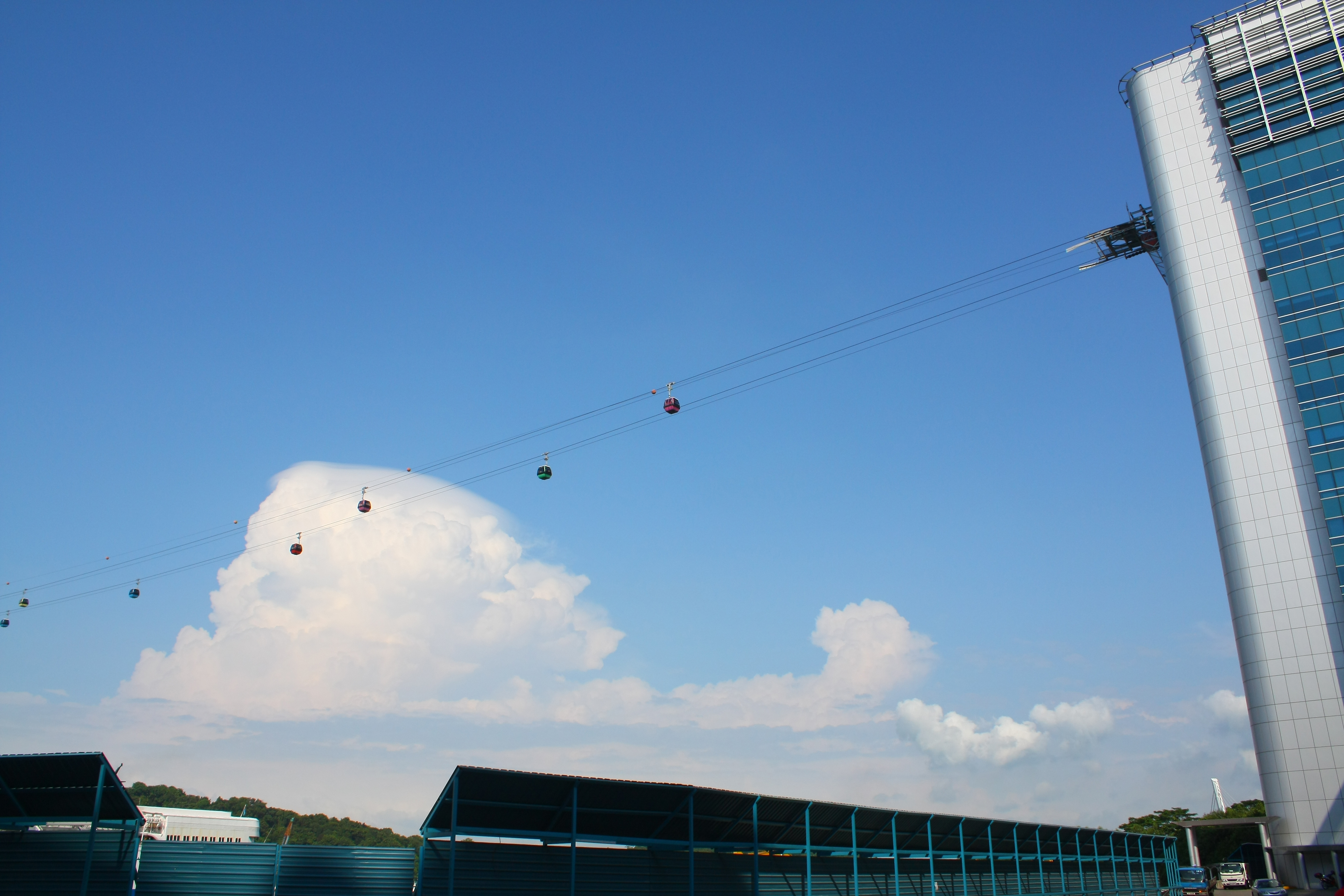
Celebrate ten years of Urban Omnibus and support ten more years of fresh, independent perspectives on citymaking with a donation today!
Celebrate ten years of Urban Omnibus and support ten more years of fresh, independent perspectives on citymaking with a donation today!
New York City’s familiarity with Cable-Propelled Transit (CPT) is limited to the somewhat outdated (though soon-to-be refurbished) Roosevelt Island Tram, and the often-derided proposal by Santiago Calatrava for a gondola to Governors Island; projects plagued by financial, operational and publicity problems. As a result, many New Yorkers see CPT as unimpressive, inefficient or no more than a nostalgic novelty ride. But Steven Dale has made it his business to shed light on these misunderstood and under-appreciated systems that he says have the potential to dramatically impact how we move across our waterways — and even get to our airports. (Click here for a look at how Dale’s work is impacting Toronto’s transit planning.) Here, Dale looks back at New York City’s history with CPT and encourages us to think beyond the existing transit grid by offering bold new ideas for expanding this technology locally. –V.S.
In 2007, famed architect/engineer Santiago Calatrava publicly proposed a Cable-Propelled Transit connection between Governors Island, Brooklyn and Lower Manhattan. It did not go over well.
For a designer as accomplished as Calatrava is, the packaging of the idea was shockingly amateurish. The renderings were poor, the concept was confusingly explained and because no one actually lived on Governors Island the entire idea was easily positioned by opponents as a trivial frill catering to tourists.
Some might have been tempted to describe Calatrava’s idea as “before its time,” but it was not. It was a half-baked idea and, predictably, reaction ranged from mild bemusement to outright hostility.
And yet, here’s the funny thing: the idea was not without substantial merit. However, given the Big Apple’s previous experience with Cable Propelled Transit (CPT) in the form of the Roosevelt Island Tram (RIT), no one could blame New Yorkers for their outrage.
Built in 1976 by the Von Roll company of Switzerland, the RIT was a temporary measure designed to connect Manhattan to the then-nascent community of 10,000 people on Roosevelt Island. It was a revolutionary concept for the time, more common to ski resorts than concrete jungles. A subway connection was supposed to replace the RIT but didn’t materialize until 1989 and by then, the Tram was a permanent fixture of New York’s skyline. It remains there to this day.
Built today, the Tram would cost around $25 million USD for roughly 1 kilometer. Compare that to the $125 million per kilometer price tag attached to the Vision42 Light Rail scheme for Midtown’s 42nd Street and you begin to understand why it was an attractive option for the economically-challenged NYC of the 1970’s.
Transit doesn’t have to exist purely in the roads we know and love. It can fill other arteries, causeways and environments.The problem was not the cost to build the RIT. Rather it was the cost to operate it. More specifically, the cost of insurance needed to operate it. The cost of insurance on the RIT rose dramatically year after year. From 1976 to 1986, premiums rose from $800,000 to $9 million, a staggering 1,025 percent. This despite having an excellent safety record. Insurance costs almost exclusively made the Tram a perpetual money loser. In 1986, the insurance company added further insult to injury when they refused to renew the policy, threatening the only existing transit connection to the island. New York State stepped in and adopted a “self-insurance” policy to address the situation.
Problems, however, persisted. On April 18th, 2006, 69 people were stranded above the East River for seven hours when the Tram lost power due to human (not technological) error. There were no injuries but, in combination with another power outage the previous September, authorities concluded that the system needed a major overhaul. It was closed for the better part of a year.
Ironically, after re-opening, the tram experienced ridership levels higher than before the closure. Higher ridership did not, however, make the RIT a money-maker. Unlike the subway that now travels to Roosevelt Island, the Tram is not fully integrated into the New York City transit system. Riders only recently have been given free transfer onto the Tram from the subway and bus system rather than paying an additional fare, the result of a deal struck between the Roosevelt Island Operating Corporation and the MTA, brokered by the City Council, that allows RIOC to receive all fare revenue, first-swipe or transfer. (According to RIOC, the terms of this arrangement are currently under discussion, as the original deal is up for renewal. -Ed.)
It’s no wonder then that New Yorkers balked when they heard about Calatrava’s vision. It should be noted, however, that the technology envisioned by Calatrava could not be more different than the RIT. In the cable industry, the RIT is what is known as an “aerial tram.” The technology features two large cabins shuttling back-and-forth between two terminals. Wait times between vehicles are long and the size of the cabins require costly infrastructure. It is a high cost, low efficiency technology that is entirely antiquated. Current CPT systems are capable of much more.
For instance: Maximum capacity offered by the Tram is about 900 PPHPD (persons per hour per direction), whereas more advanced CPT systems today offer up to 6,000. Newer CPT systems allow for intermediary stations, dense urban alignments, corner-turning, full-integration with transit systems and less-than-one-minute (LT1M) wait times at a price cheaper than most aerial trams (not to mention light rail). It’s also the safest transit technology around save for elevators, which, if you think about it, operate in a very similar manner.
These systems, however, did not exist when the Tram was first built. Had the RIT been designed and built today, it would likely be a continuously-circulating gondola system with LT1M wait times. It would likely terminate in a tall building (such as on Sentosa Island, Singapore), thereby allowing users to transfer directly (via elevator) to a nearby subway station. That’s what was built in Medellin, Colombia in 2004 where the system has been a tremendous success and has spawned two other multi-station cable lines. Systems in Constantine, Algeria and Caracas, Venezuela have met with equal acclaim.
Portland, Oregon also got into the action a few years back but made the mistake of choosing an aerial tram. And yet, despite this oversight, the Portland Aerial Tram experiences ridership nearly double what was originally forecasted, a rarity in transit planning.
Calatrava’s Governors Island cable system most closely resembled those of Colombia and Algeria, but it was never packaged, presented and explained that way. He also imagined the system arcing upwards instead of downwards adding unnecessary complexity and cost to what is a very straightforward and simple technology. But since few people know anything about cable transit, confusion was almost a certainty and one has to forgive New Yorkers’ skepticism towards his proposal.
Technology concerns aside, Calatrava’s vision was also suspect because it attempted to solve a problem that no one had. Development of Governors Island was and is likely a decade away, making any current transit link premature. There is, however, a way to re-mix the Calatrava concept into a worthwhile addition to the Manhattan transportation network that solves a problem millions of people have each year:
What if we extended the link all the way to Newark Liberty International Airport?
The current experience of getting from Newark Liberty to Lower Manhattan is an infuriating and expensive odyssey of subways, transfers, commuter rails and people movers. Delays and missed transfers are constant. An urban gondola cable trip from Brooklyn to Newark would take around 45 minutes and would certainly be a more pleasant ride. Constructing and implementing such a link would be challenging, but it is technologically and economically feasible.
Or how about connecting Queens to the Bronx via Rikers Island? Or Harlem to LaGuardia via Randalls Island? A Staten Island connection across the Verrazano Narrows? They’re all doable. Once you wrap your mind around the implications of cable, you can quickly imagine the possibilities.
Cities need effective transit more than ever, but the state of government finances makes system expansion difficult. Cities are determined to get people out of their cars, yet traditional road-based technologies present serious difficulties. If we are to solve our cities’ transit problems, we need to think “off-grid.” Transit doesn’t have to exist purely in the roads we know and love. Transit can fill other arteries, causeways and environments. And due to the lack of “competition” in these arteries, transit can be built more sustainably from both an economic and ecological view. We need transit solutions that provide high levels of service but don’t burden future generations with exorbitant bills to repay.
We need transit that treats riders with respect and addresses their actual needs. Transit should not be the inconvenient hassle that it is now. Transit planners too often work under the assumption that our current regime is what transit is. Don’t like it? Tough. We need to take the time to think about what transit should be. Cheap, with LT1M wait times, high speeds, quick transfers, no schedules and – heaven forbid – an elegant, fun-to-ride system. These are all things that riders hope for and deserve. Cable can offer that.
Santiago Calatrava’s design may have been flawed, yes. But at least it was pointing in the right direction. We should recognize that and then re-interpret it, dream it and run with it.
The views expressed here are those of the authors only and do not reflect the position of The Architectural League of New York.


Comments